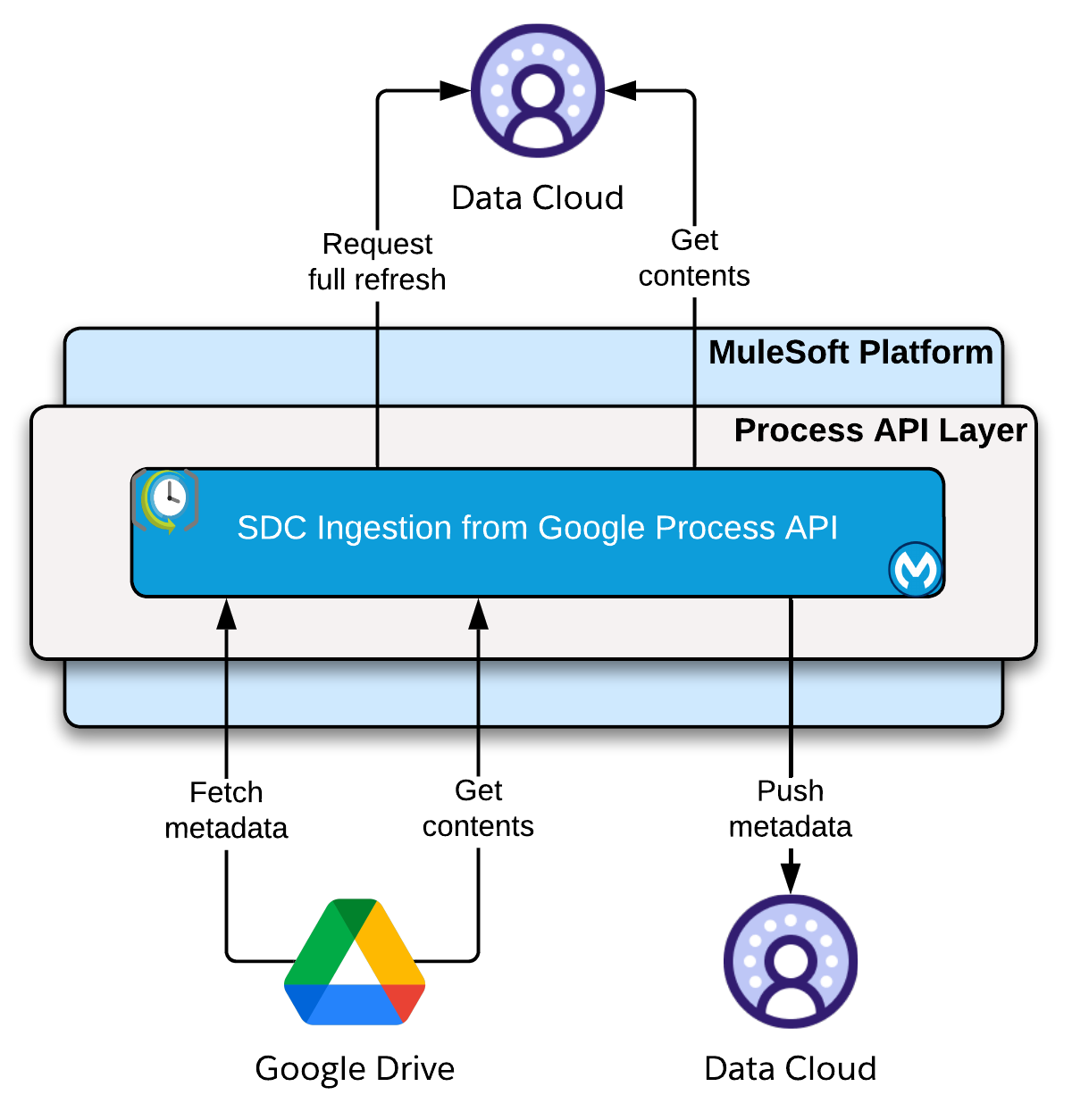Salesforce Data Cloud Ingestion from Google - Implementation Template
home
This application enables users to integrate Salesforce Data Cloud with Google Drive to allow them to surface unstructured data, powering a variety of generative AI use cases. It handles the orchestration required to ingest both content and its associated metadata from Google Drive to be used in conjunction with Data Cloud's vector database.
High level architecture

|
Capabilities
The Salesforce Data Cloud Ingestion from Google Process API can be used to synchronously and asynchronously ingest data into Data Cloud from Google Drive. It supports the following functionality:
- Initial Load / Full Refresh Synchronous - Allows the ingestion of metadata from Google Drive files to Data Cloud using a paginated approach.
- Initial Load / Full Refresh Asynchronous - Allows the ingestion of metadata from Google Drive files to Data Cloud asynchronously. The application will handle pagination through the resources and directly publish to Data Cloud.
- Retrieve Content - Allows retrieving content from Google Drive for the requested resource in Data Cloud to support a variety of use cases.
- Poll Incremental - Periodically scans for changes in Google Drive and sends metadata related to the changes to Salesforce Data Cloud.
Additional resources
- The Setup instructions page outlines the steps to configure the data source and deploy the application to Anypoint Platform (including definitions of the required user parameters).
- The Application details page provides additional information regarding application design and functionality.
- The Data mappings page describes how the request and response data structures are mapped between Google Drive and Salesforce Data Cloud.
- This integration implements the Salesforce Data Cloud Ingestion Process API specification to ingest content and its associated metadata from source systems into Salesforce Data Cloud.
- Refer to the MuleSoft Direct for Data Cloud solution for more information about the use case.
- See the Data Cloud documentation for more details about implementing the use case and making use of the ingested unstructured data in Data Cloud.